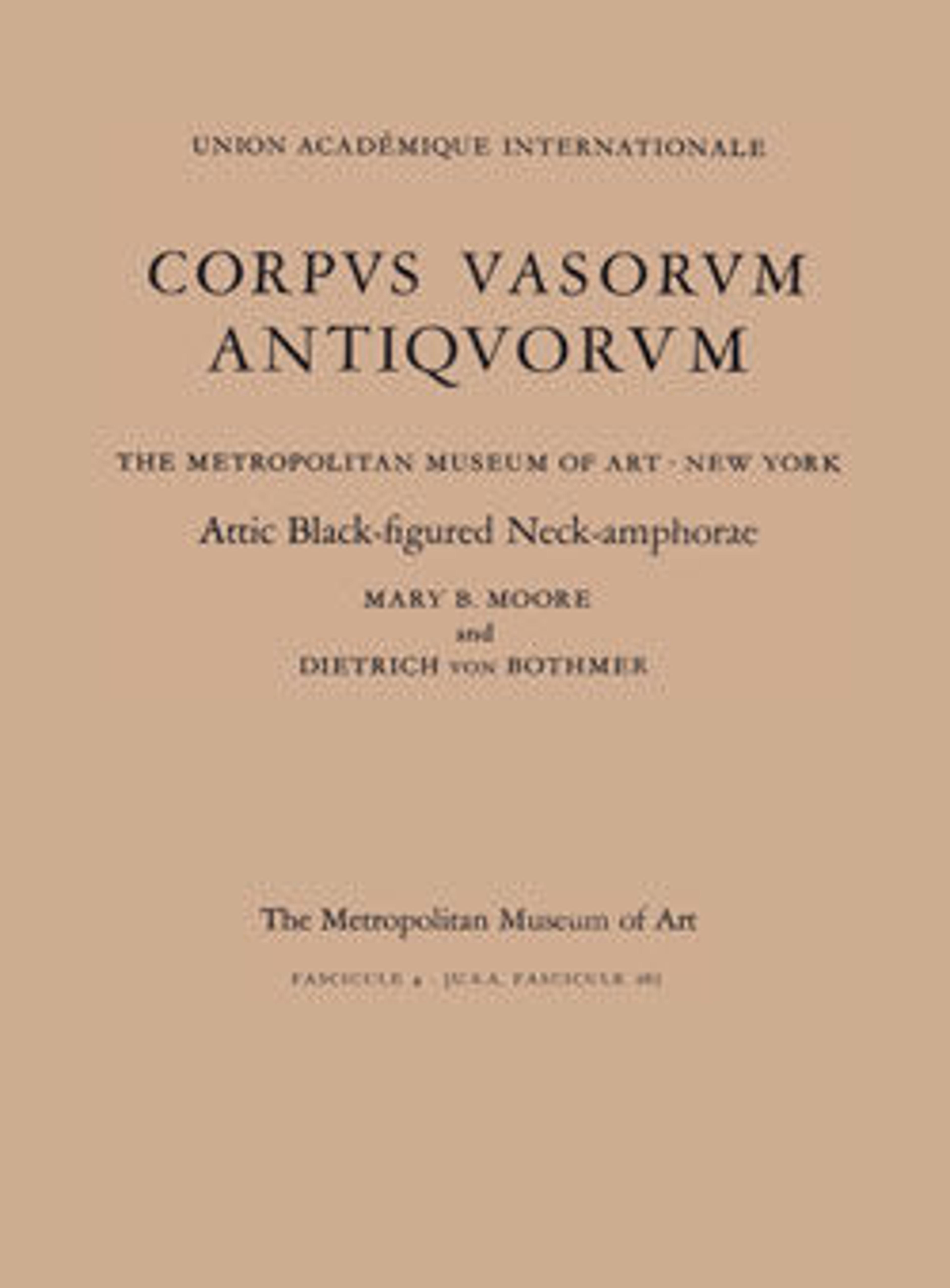Terracotta neck-amphora (storage jar)
Obverse, two fighting warriors flanked by roosters
Reverse, swan between panthers
The Goltyr Painter is a prominent member of the so-called Tyrrhenian Group active during the later second quarter of the sixth century B.C. It is noteworthy that animal and figural subjects are depicted on the same scale, a practice that changes with the following generation of artists who establish the primacy of the figure. Tyrrhenian painters favored ovoid neck-amphorae, the majority of which were exported to Etruria.
Reverse, swan between panthers
The Goltyr Painter is a prominent member of the so-called Tyrrhenian Group active during the later second quarter of the sixth century B.C. It is noteworthy that animal and figural subjects are depicted on the same scale, a practice that changes with the following generation of artists who establish the primacy of the figure. Tyrrhenian painters favored ovoid neck-amphorae, the majority of which were exported to Etruria.
Artwork Details
- Title:Terracotta neck-amphora (storage jar)
- Artist:Attributed to the Goltyr Painter
- Period:Archaic
- Date:ca. 560 BCE
- Culture:Greek, Attic
- Medium:Terracotta; black-figure
- Dimensions:H. 29.49 cm.
- Classification:Vases
- Credit Line:Fletcher Fund, 1956
- Object Number:56.171.15
- Curatorial Department: Greek and Roman Art
More Artwork
Research Resources
The Met provides unparalleled resources for research and welcomes an international community of students and scholars. The Met's Open Access API is where creators and researchers can connect to the The Met collection. Open Access data and public domain images are available for unrestricted commercial and noncommercial use without permission or fee.
To request images under copyright and other restrictions, please use this Image Request form.
Feedback
We continue to research and examine historical and cultural context for objects in The Met collection. If you have comments or questions about this object record, please contact us using the form below. The Museum looks forward to receiving your comments.
